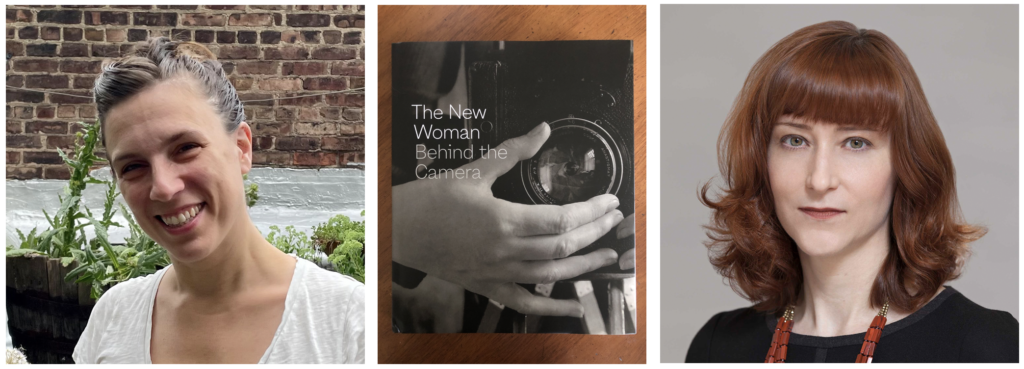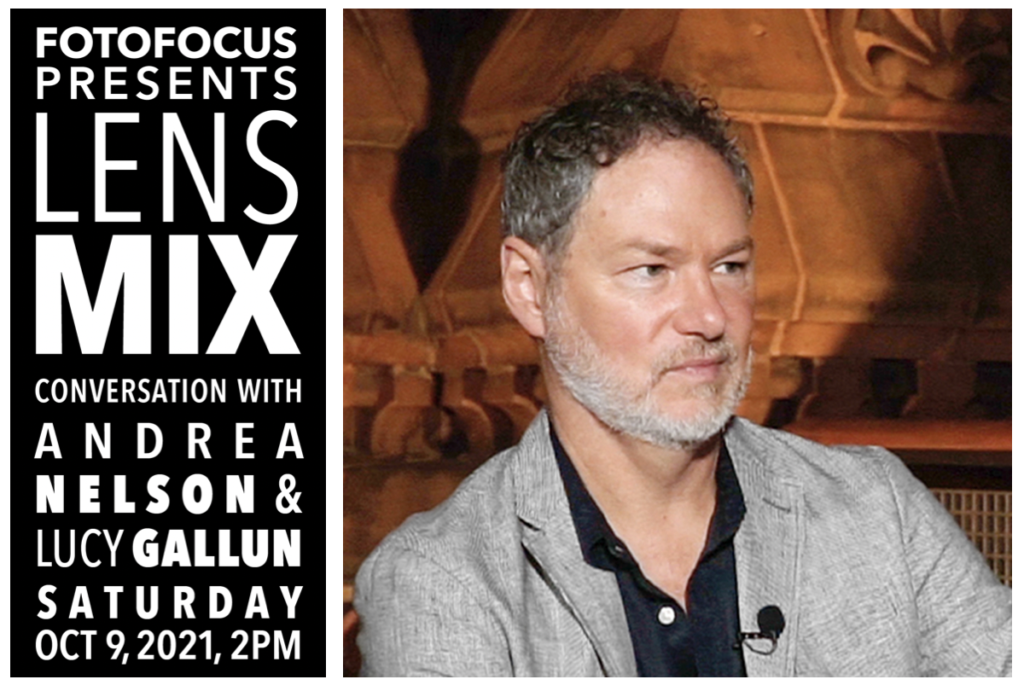Curator Kevin Moore Talks Expanding the Canon
Posted on October 8, 2021
Ahead of Lens Mix 7, a conversation about the necessity — and the inherent challenges — in defining and broadening a photographic canon. Catch the full virtual conversation moderated by Kevin Moore with guest curators Andrea Nelson and Lucy Gallun on Saturday, October 9.
“The history of photography is still a relatively new field, and its history is constantly being written and rewritten in relation to the world as it evolves,” says FotoFocus Artistic Director and Curator Kevin Moore.
As an art historian, Kevin Moore spends a lot of time thinking about the bigger questions of how history is written. And at a point in time when this particular question — of who’s typically been lauded and who’s been left out of the historical record — is front-of-mind in the popular imagination and institutions everywhere are in modes of self-evaluation, Moore is bringing together curators Andrea Nelson and Lucy Gallun for a one-hour virtual conversation about the how and why of expanding the artistic canon, past and present.
We checked in with Moore to hear more in advance of the Lens Mix 7 conversation, which you can join to watch Saturday, October 9, at 2 p.m. EST.
(Lens Mix is free and open to all, but registration is required for the one-hour Zoom conversation.)
FF: The upcoming Lens Mix conversation is about expanding the canon. That’s something that has always been necessary, as time has brought new movements and ideas, but it has also been a very imperfect process. Can you talk to me a bit about how the idea of expanding the canon is changing now?
KM: It’s gone on for a long time. To give one example, [curator and art historian] Robert Rosenblum was famous for going in search of painters of the modern period that didn’t really last — the people who gave you more of a sense of the culture at the time, that didn’t end up as celebrated as Van Gogh’s Starry Night at the MoMA.
It was a way to kind of take you back in history better, to understand the past in a more horizontal way instead of in terms of these hierarchies. There are trends, too, of course, in terms of who is popular or who is in favor. Recently, with Black Lives Matter, [you’re seeing] at art fairs and lectures all of these Black speakers who are coming from seemingly nowhere — but obviously they have been there all along, they have just been under-represented in the lecture and exposure market. With women, that’s been going on for a long time, too.
This pair of speakers, Andrea Nelson and Lucy Gallun, address the historical aspects of that — trying to fill in the canon and expand it and show bigger, global geographies — and also to actively do that now in the choices that are made of who gets considered for a show at MoMA, who gets highlighted in new photography.

FF: I was curious about those dual aspects, the historical revisionism and contemporary curation. It’s interesting that you mention MoMA, one of the first things I thought of was my conversation with Sarah Meister when she was part of a previous Lens Mix. She was talking about her final exhibition at MoMA, that she was researching and finding all of these Brazilian modernist photographers that she never heard of despite 25 years as a photography curator there.
KM: The thing is, archives are huge. And museums are being sort of pressured to do blockbuster shows, and they only want big names. These [other] kinds of shows are unpopular, although in the scholarly realm they are considered important and a real contribution — if you unearth forgotten artists, especially if you’re looking specifically at the case of suppressed careers.
That is what Andrea Nelson is doing in her book The New Woman Behind the Camera, and the accompanying show. A lot of those photographers were in shows at the time that they were known, often as the wife of a more famous partner, like with Lola Álvarez Bravo and Manuel Álvarez Bravo. They were either in the shadow or they were just overlooked for one reason or another by history.
The challenge becomes: Museums are asked to make critical judgments about things. In a world of so much stuff, curators need to tell us what is important. You’re looking at a massive pile of photographs; you need a specialist to say, Alright, I’ll direct your attention to five things. That’s what you want. You feel a little bit lost without a drama of some kind to organize and capture the imagination. It can feel a bit flat. So how do you satisfy museum mandates to bring in crowds, but also work with the collection? These are contradictory impulses in some ways, but I think that’s what a lot of people, like Andrea, are trying to do in shows.
FF: It does point to how limited ultimately any form of curation ends up being. That’s the whole thing of curation, you’re selecting a thing. It’s always going to be subjective, and still pointing to the time in which it’s done.
KM: I think we are so self-examining at this point it’s almost paralyzing. I don’t know what the answer is, except to keep trying. I think as a curator you have to ask yourself: How does this match up with the larger cultural impulse? Am I representing something a lot of people will appreciate as an approach to this? I think that’s what has gotten a show like New Woman Behind the Camera to the Met. People understand that as a necessary broadening.
FF: What led you to choose Andrea and Lucy as a curators for this conversation?
KM: We spend a lot of time in Lens Mix talking about what artists think about, but I think in this case it will be enlightening for the audience to see how curators go about things. The last Lens Mix was a conversation around tokenism, and asking how do institutions actually change. I’m following up on that question: How do people within institutions work with the institutions to expand the conversation and do a better job with representation?
Hear what the curators have to say during Lens Mix 7, Saturday, October 9, 2 p.m. EST. (Free and open to all, but registration is required for the one-hour Zoom conversation.)
